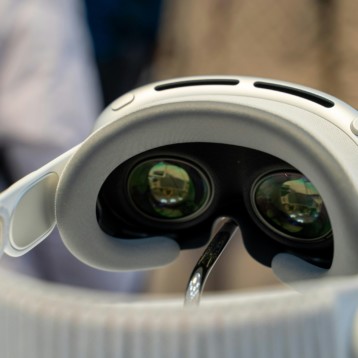Dealing with toxic material is just another part of working in many labs and manufacturing facilities all over the world. knowing you are being exposed to a dangerous material is a different thing which effects workers everywhere. German researchers recently developed gloves which indicates the presence of toxic substances by changing colors – signaling to the person using them that they are in danger.
Working in a radioactive environment, authorized personal use special ID cards with detectors that measures the amount of radiation. Such measures do not exist for other potentially deadly substances. This is why researchers from Fraunhofer Research Institution for Modular Solid State Technologies (EMFT) in Regensburg have engineered a glove that recognizes when a toxic substances are present in the surrounding air.
The new protective gloves are equipped with special sensors which indicate the presence of toxic substances by changing colors. Dr. Sabine Trupp, head of the Fraunhofer EMFT Sensor Materials group, suggested that: “By synthesizing the adapted color sensor materials, we can detect gases like carbon monoxide, for example, or hydrogen sulfide. Still, this protective gear represents only one potential area of application. Sensor materials could also be deployed for the quick detection of leaks in gas lines".
–
–
The gloves use special sensor-activated dyes which the researchers integrated into the textiles which makes the gloves. One such technique was affixing them in an immersion bath. Another option was to, coat the fabric with sensor particles that are furnished with sensor dyes. In order to accomplish this the researchers integrated the dye molecules into commercial pigments or built them using only synthetic materials. The pigments are then manufactured using existing textile finishing process – choosing what method to use depends on the specific application.
–
–
There are many considerations when developing such a technology. For example, the dye must stick firmly to the fabric and not disappear when washed otherwise it will no longer be useful in protecting the user. The dye molecule should also be specific so that it won’t show false alarms but will work every time when exposed to the target substance.
–
–
The current development is just the first step. The researchers already have ideas how to further develop the technology. For example, developing a tiny sensor module built into fabrics which could record toxic substances, store the measurement data and even transmit them to a main unit (like a sophisticated radiation monitor but for all kind of toxic materials. Just like with radiation, health professionals can monitor how much dangerous substances was the user exposed to over long periods of time and react accordingly.
–
–
Even more interesting applications could come in the future in a completely different area – the food industry. By integrating such sensor dyes into food packages – it will be possible to see if a specific product spoiled prematurely (due to refrigeration issue, poor maintenance, bad packaging etc.).
–
–
More information on the research can be found on the fraunhofer website.











